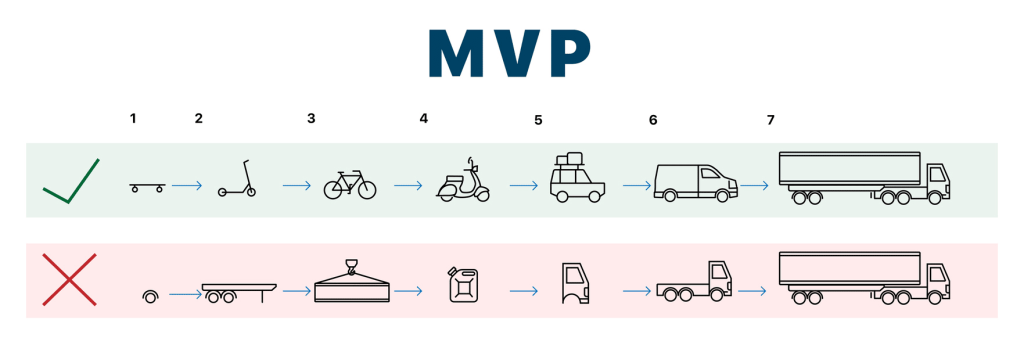
Why MVP Matters in Product Development
Building a product from scratch is risky. Pouring time and money into a full-scale launch without knowing if there’s demand? That’s a surefire way to fail. This is where a minimum viable product (MVP) comes in. It’s the simplest version of your product, designed to test market demand, gather feedback, and refine your idea before going all in.
MVP as a Launchpad: Moving from Idea to Market with Confidence
1. Test the Waters Before Diving In
A great idea doesn’t always turn into a successful product. Many fail because they don’t solve a real problem or fit what users actually need. Instead of investing everything upfront, launching an MVP lets you test the waters. A trusted MVP development agency helps you get early traction and avoid costly missteps.
2. Launch Faster, Learn Quicker
Speed matters. The faster your product reaches users, the quicker you get real feedback. No need for guesswork – data will show what works and what flops. With smart product discovery solutions in place, startups can focus on what actually moves the needle.
3. Attract Investors with Real Results
Ideas are easy to pitch, but investors want proof. A working MVP with real users carries more weight than just a concept on paper. Data-backed traction boosts your chances of securing funding. A well-executed MVP isn’t just a test – it’s the first real step toward market validation.
4. Scale Smart, Not Blindly
Too many features can kill a product before it even finds its footing. An MVP helps filter out what’s unnecessary, so you only build what people actually use. By scaling based on real demand, you avoid bloated software and wasted resources.
Steps to Building a Strong MVP
1. Prototype First
Start with a prototype instead of jumping straight into development. A prototype helps visualize the user experience, test ideas, and fine-tune the core concept. A solid MVP development company ensures that the design aligns with market expectations.
2. Focus on the Essentials
A good MVP doesn’t try to do everything at once. It sticks to the core functionality that solves a primary problem. Adding too much upfront can confuse users and slow down development. A strong MVP development agency helps prioritize what really matters.
3. Validate the Market First
Before investing in development, make sure there’s a real demand for your product. Talk to potential users, research competitors, and gather feedback. Customer surveys and prototype testing help confirm if the idea is worth pursuing.
4. Develop and Test in Iterations
MVPs evolve. The best approach is an iterative one – launch, get feedback, tweak, and improve. Real users will show you what’s working and what needs fixing. Continuous refinement ensures your product stays relevant.
5. Plan for Growth
If your MVP gains traction, what’s next? Scaling requires a plan. With a foundation built on real user data, expansion becomes smoother and more strategic. A flexible MVP development service makes it easier to grow without hitting roadblocks.
How To Make MVPs Succeed
- Set Clear Goals – Every MVP needs a specific purpose. Align each step with your business objectives.
- Market Validation – Data-driven research helps confirm your idea before major investment.
- Prioritized Features – Focus on core functions first, so you get maximum value with minimal cost.
- Iterative Development – Constant feedback and updates keep your product relevant.
- Scalability Built In – A well-structured MVP makes future expansion easier.
- Ongoing Maintenance – Keep your product optimized and ready for long-term success.
Wrapping Up
We appreciate the insights from S-PRO AG while preparing this article. A few words about them – S-PRO has successfully built MVPs for fintech, healthcare, manufacturing, and renewable energy sectors. An MVP isn’t about perfection; it’s about validating an idea in the real world without unnecessary risks.




















